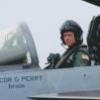Grumman Mallard accelerated stall
-
Members Online
- Parker_Woodruff
- M20R
- lithium366
- Bike_rider
- Jack Burson
- N201MKTurbo
- eman1200
- Gus
- ziggysanchez
- William Munney
- TheAv8r
- KER
- Bunti
- Danb
- wivika2537
- McMooney
- SilentT
- midlifeflyer
- ZMERC
- jlunseth
- Texas Mooney
- Bolter
- Schllc
- Ragsf15e
- FlyingDude
- Planegary
- dvk
- salty
- IvanP
- 802flyer
- siouxpilot77
- Kathy
- LANCECASPER
- Seth Miller
- Scottknoll
- GeeBee


Recommended Posts
Join the conversation
You can post now and register later. If you have an account, sign in now to post with your account.